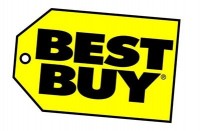Today social media is accessible more than ever! You can access it from home, from school, and even from within the office. Yes, your employees sneak in the occasional glance at the Facebook feed and the occasional tweet here and there. Should you care? The answer is yes, you most definitely should.
It is important for organizations and companies to keep track of what their members and employees are tweeting and posting about especially on issues that pertain to the workplace. You might be asking yourself: How exactly can this be done? Will you be hampering their rights to freely post whatever content they see fit for their social networks? Should you just ban them from accessing their social media sites at work completely? What exactly is the proper way to go about this sensitive issue?
Don’t sweat it. We’re here to help you get started. We’ve gathered 5 terrific examples of social media guidelines from a very diverse collection of companies ranging from sports apparel manufacturers to print media publications. Take a while to read and study the different approaches that these companies use to manage their employees social media usage and maybe you can borrow some of these techniques for you to use yourself. Let’s check them out, shall we?
#1. Adidas:

First let’s take a look at how Adidas does things. As you may know, Adidas is one of the market giants in the sports apparel manufacturing industry. Adidas is a world-famous brand with offices and employees situated all around the globe. How exactly do they manage their employees’ social media ventures? Adidas takes a very encouraging but strict approach when it comes to their Social Media Guidelines. Here are some highlights from Adidas’ Social Media Policy:
- Employees are allowed to associate themselves with the company when posting but they must clearly brand their online posts as personal and purely their own. The company should not be held liable for any repercussions the employees’ content may generate.
- Content pertaining to sensitive company information (particularly those found within Adidas internal networks) should not be shared to the outside online community. Divulging information like the company’s design plans, internal operations and legal matters are prohibited.
- Proper copyright and reference laws should be observed by employees when posting online.
#2. Best Buy:

For the second example, let’s take a look at the biggest multinational consumer electronics corporation in America: Best Buy. With a customer service system that relies heavily on the use of social media, Best Buy’s Social Media Policy is clear-cut and precise. Let’s browse through some key points:
- Like Adidas, Best Buy also mandates its employees to freely disclose their affiliation with the company granted that disclaimers are set freeing the company from any intellectual investment in the post.
- Dishonorable content such as racial, ethnic, sexual, religious, and physical disability slurs are not tolerated.
- Employees are not allowed to disclose information that are financial, operational and legal in nature, as well as any information that pertains to clients and customers.
#3. HP (Hewlett-Packard):

HP is one of the biggest information technology corporations in the world. The company has an interesting take on blogging policies by enabling its employees to post content online via a blog embedded in their company website. These are some important points from the HP’s Blogging Code of Conduct:
- HP promotes healthy and honest discourse with its readers.
- The company reserves the right to edit or amend any misleading or inaccurate content depicted in blog posts. The company also reserves the right to delete blog posts violating the code of conduct.
- HP values, respects, and upholds the intellectual property rights of its bloggers.
#4. GAP:

Let’s now shake it up a little and move into the fashion industry. As one of the most recognizable fashion brands in the world, GAP also recognizes the need to moderate the use of social media amongst their employees within the work place. At a company conference last year, GAP handed out brochures to its employees depicting proper guidelines and decorum that had to be satisfied when partaking in social media. It was an interesting approach, as the brochure’s content was very conversational, but very straight-forward as well. Here are some excerpts:
- “Some subjects can invite a flame war. Be careful discussing things where emotions run high (e.g. politics and religion) and show respect for others’ opinions.”
- “Your job comes first. Unless you are an authorized Social Media Manager, don’t let social media affect your job performance.”
- “If you #!%#@# up? Correct it immediately and be clear about what you’ve done to fix it. Contact the social media team if it’s a real doozy.”
- “Don’t even think about it…. Talking about financial information, sales trends, strategies, forecasts, legal issues, future promotional activities. Giving out personal information about customers or employees. Posting confidential or non-public information. Responding to an offensive or negative post by a customer. There’s no winner in that game.”
#5. The Los Angeles Times:

For our last example, let’s take a look at one of the premiere print media publications in the world. The Los Angeles Times recognizes the importance of social media in journalism. Therefore, they encourage their journalists to freely participate in social media ventures given that they adhere to the Times’ Social Media Guidelines. For some key points:
- Principles of integrity, professionalism, privacy and impartiality should be observed by journalists when posting online.
- The authenticity of what employees post is important. Online journalists should verify questionable content with credible sources before posting or tweeting about it.
- It is important for employees to properly define their association with the publication as they would do offline.
Hopefully we’ve provided enough perspective for you to be able to shape your own company’s social media guidelines. You can find more social media policy examples from companies such as Dell and Coca-Cola here.
Don’t like some of these examples? Don’t use them. Want to borrow some of these guidelines? Go ahead. What is important is that you tailor fit your guidelines to whatever is best for your company and industry. Do leave your thoughts and comments in the box down below.




Pingback: 5 Great Corporate Social Media Policy Examples « @HireRabbit Social Recruiting Blog!
http://www.accademiaclub.it
Pingback: How to Effectively Target LinkedIn for B2B Marketing
Pingback: Social Media at Work: 10 Steps to Construct an Effective Workplace Policy
Pingback: Could Your Podcast Get You Fired From Your Job? | How to Record Podcasts
Pingback: finance app
Pingback: C2 Strategic Communications | Social media: Where personal and professional can collide